Five Mountain Escapes for a Magical November
Discover five mountain destinations where crisp...
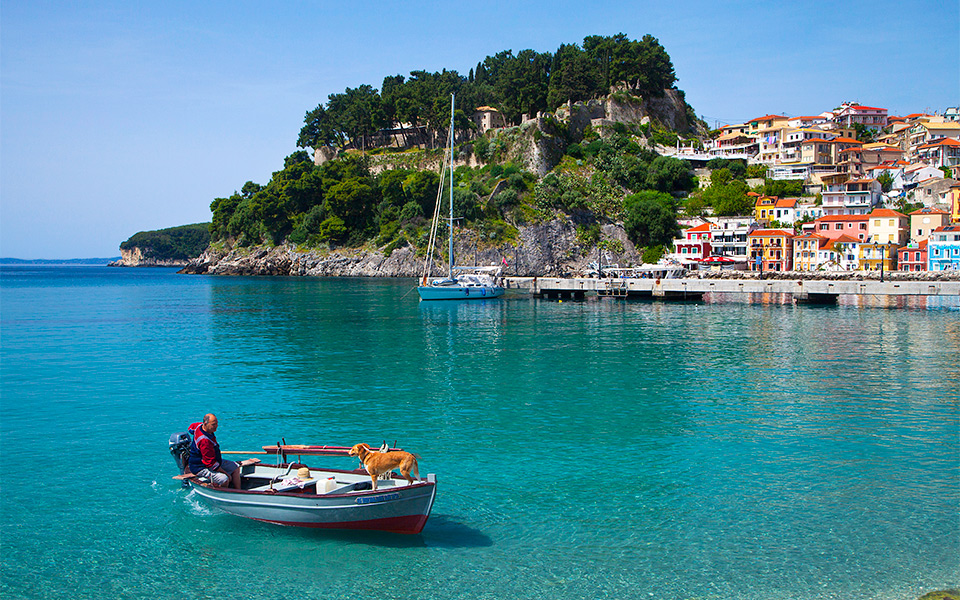
© Olga Charami
“It’s like we’re on an island, isn’t it?” one young girl on a school trip says to me. She runs off without waiting for an answer – she doesn’t need one. Parga may be on the mainland, but it definitely has that island vibe.
For us – and no doubt the teens – the trip has the feel of a dress rehearsal for this summer holidays. It has everything you could want from a sun-drenched weekend: long sandy beaches lapped by an emerald sea, a charming promenade to stroll along in the evenings, a picturesque town with colorful houses and narrow streets built amphitheatrically around the bay, restful nights in new, high-quality boutique hotels.
And there’s plenty more to do for those who like to stay active. The students, for example, will take a trip to the River Acheron only 30km away. The waterway was known to the ancient Greeks as one of the five rivers of the underworld, and on its banks are the ruins of a nekromanteion, an ancient temple dedicated to necromancy. Supposedly built at an entrance to the underworld, it was a site where pilgrims were said to be able to communicate with the dead. Also worth visiting are the springs of the river which are about as far, visually, as one can get from the realm of the dead, with sparkling clear waters running through a forest of plane trees.
Meanwhile in the opposite direction to the north, a beautiful coastal road takes you to Syvota, another popular holiday destination where forested hills meet hidden coves with sandy beaches.
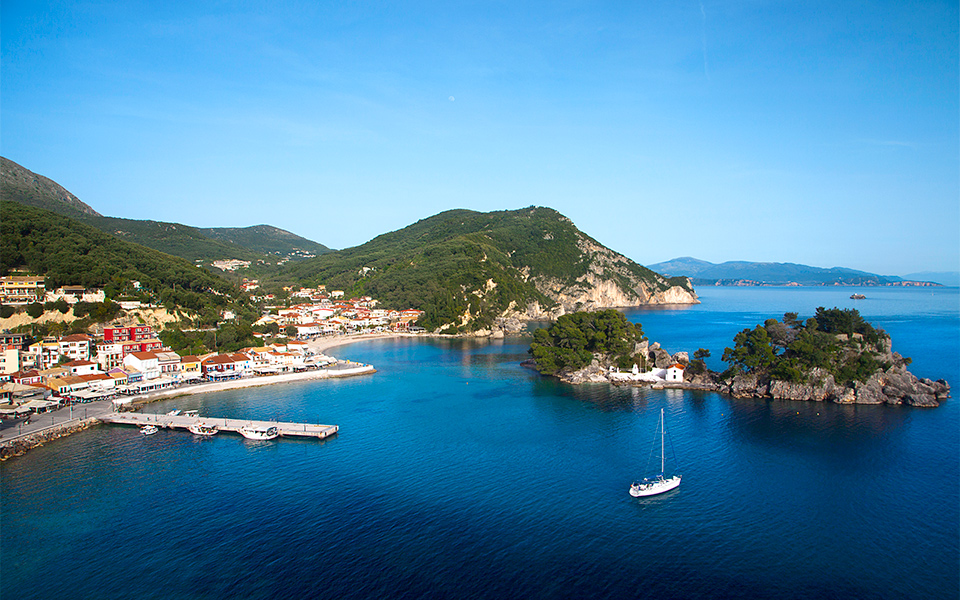
The view from the castle
© Olga Charami
The first sailboats have already arrived and appear to hover as they float on the transparent sea. In the summer the twin bays will fill with boats and swimmers. The fact that it is located close to several major towns and is easily accessible by road makes Parga a popular summer destination, and it can get busy, particularly over the weekends.
The town itself is enchanting, with colorful houses rising up steep, densely forested slopes. Out in the bay, the islet of Panaghia forms the centerpiece of a postcard-perfect scene. The best spot is occupied by the town’s castle. After passing through the fortified gate that features the winged lion of Saint Mark, you will be able to take in panoramic views over the Ionian and Parga itself. One can sit for hours at the cafe located in the interior of the old fortress gazing out over the sea.
The castle was built by the Venetians over the ruins of an older fortress, making use of the natural defenses offered by the steep-sided peninsula. Later, when Parga was sold to the Ottomans and the town’s residents fled to the nearby islands of Corfu and Paxos, the ruler of the area, Ali Pasha, further renovated the fort, strengthening its defenses.
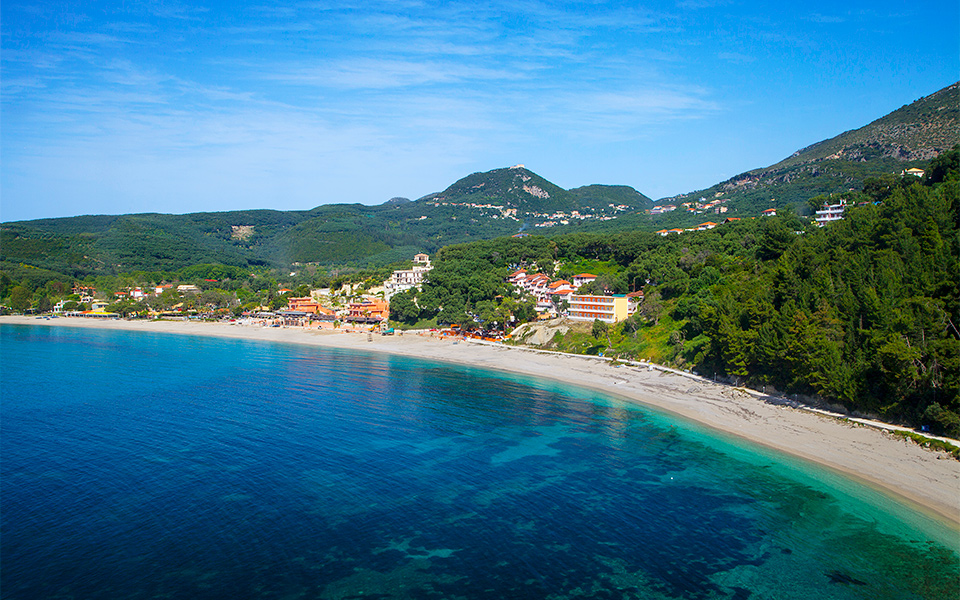
© Olga Charami
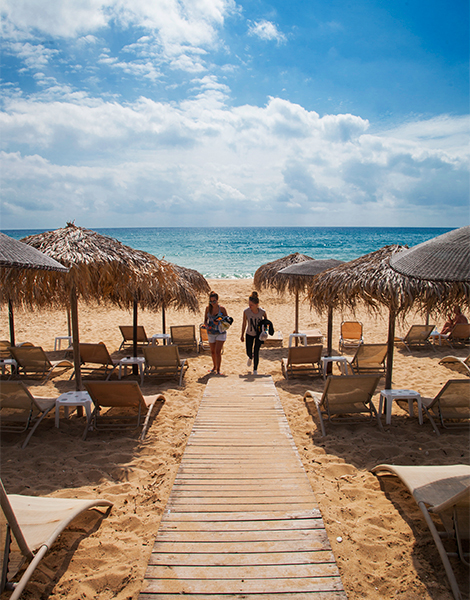
© Olga Charami
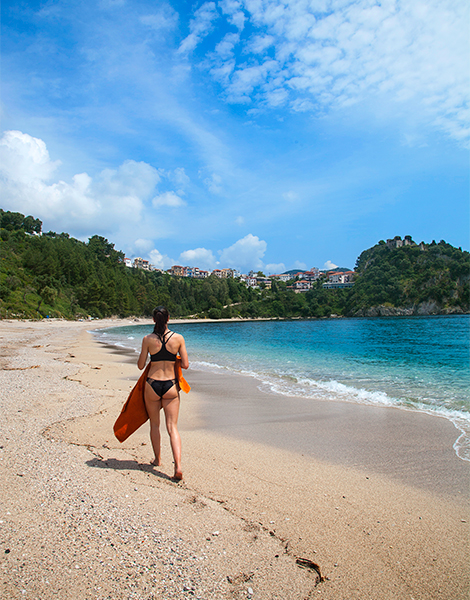
© Olga Charami
That said, today there is minimal maintenance of the site, with the buildings, covered walkways and cobbled paths thick with weeds. Despite this it is worth touring the site as the views of the Ionian and of the beach of Valtos to the southwest are truly stunning.
To get to the castle you need to walk along narrow, uphill alleyways, passing shops and stooping at the low archways, perhaps also exchanging pleasantries with some of the locals tending to their their courtyards and watering their plants.
The promenade along the waterfront is a much easier stroll. Here the air is laden with the scent of the sea – and of the seafood being grilled at the various ouzeris. An enormous anchor forms a key reference point, and along the pier you will find various boats offering trips to remote bays, as well as paddle boats that you can rent to head to the small islet in the bay. All of this is set against a backdrop of colorful houses with ceramic tiled roofs, many of which once belonged to merchant-ship captains – the legacy of the days when exports of olive oil and citron fruit by Parga’s renowned merchants fueled the town’s prosperity.
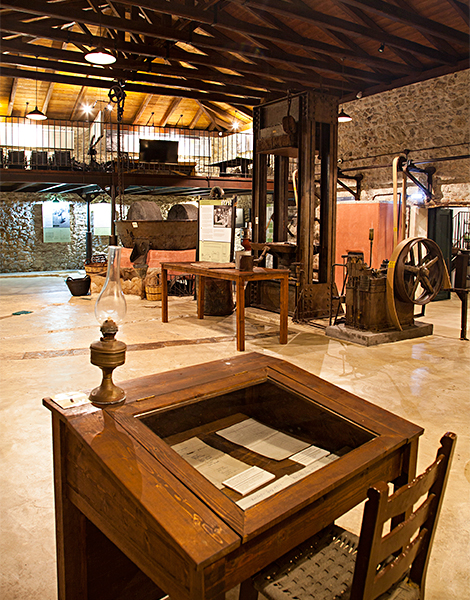
© Olga Charami
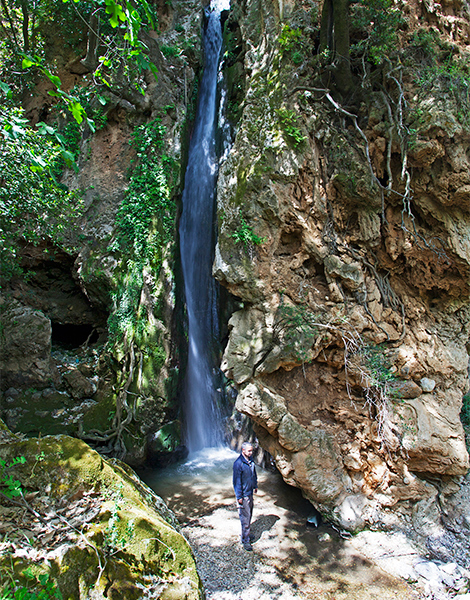
© Olga Charami
For the locals, olive oil remains a major part of life. From the days of the Venetians who planted many of the olive groves until today, the chief variety cultivated here is the Corfiot Lianolia. Many of the trees that cover almost every spare inch of land tower 20m or 30m tall – unusual for cultivated olive trees. It is the result of the local traditional practice of trimming the lower branches as opposed to the top ones and then gathering the olives as they fall into huge nets. Today the younger generation of olive growers prune their trees in order improve the quality of the olives collected.
This is just some of what you will learn at the old Lekka Bros olive press, Parga’s first mechanical press that was created in 1929 and today has been converted into a museum under the name Paragaea. Athina and Ilias Liakris, the museum’s energetic owners have overseen the complete renovation of the press and the preservation of this piece of history. They also have olive trees of their own and produce extra virgin olive oil and other products that are available at the museum’s shop. They also run cooking seminars and evening tasting events.
If you’re a fan of museums also check out the Ecclesiastical Museum of Parga which features traditional local costumes and the city banner that the Pargans took with them when they abandoned the city during the Ottoman occupation.
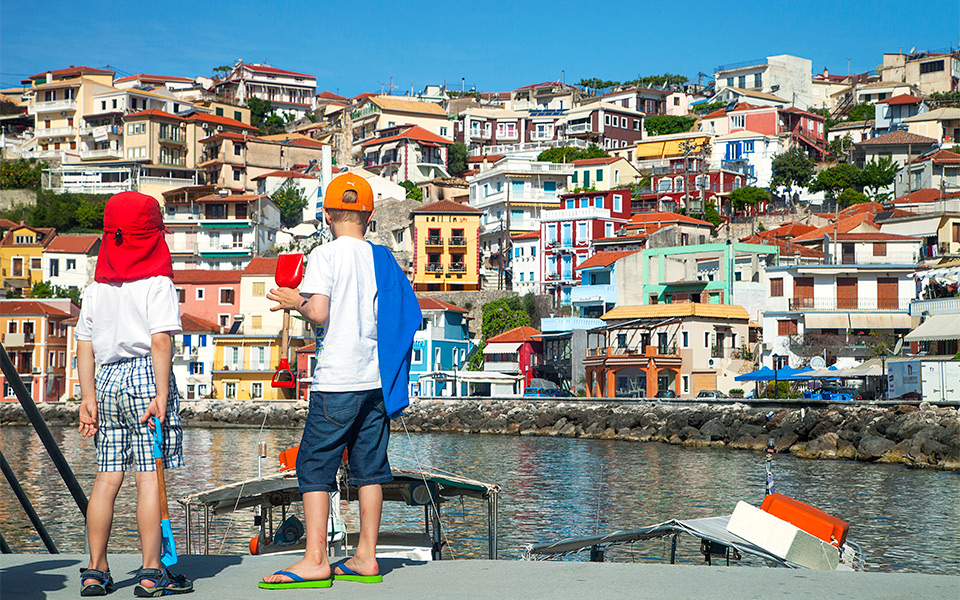
© Olga Charami
Another route worth doing, even despite the uphill walk, is the path that takes you to the church of Aghia Eleni from where there is a panoramic view of Parga. Most prefer to hike this route in the late afternoon – in part to avoid walking in the hot sun, and in part to not miss out on a moment of potential beach time.
Many of the locals tend to swim at the famous beach of Loutsa, located 25 kilometers to the south, but there is no need for you to follow them. The beaches of Kryoneri – located just under the town, Piso Kryoneri, and Valtos (with a view of the rear of the castle) are organized and fantastic. The same applies for Lychnos and Ai-Giannaki to the south. If you head up the road that leads to Syvota you can also swim at Sarakiniko, then Karavostasi and Arilla.
Meanwhile the villages outside of Parga have their own charms. At Margariti there is a well-put-together folk museum as well as the Kalodikiou marsh which at this time of year is covered in flowering water lilies.
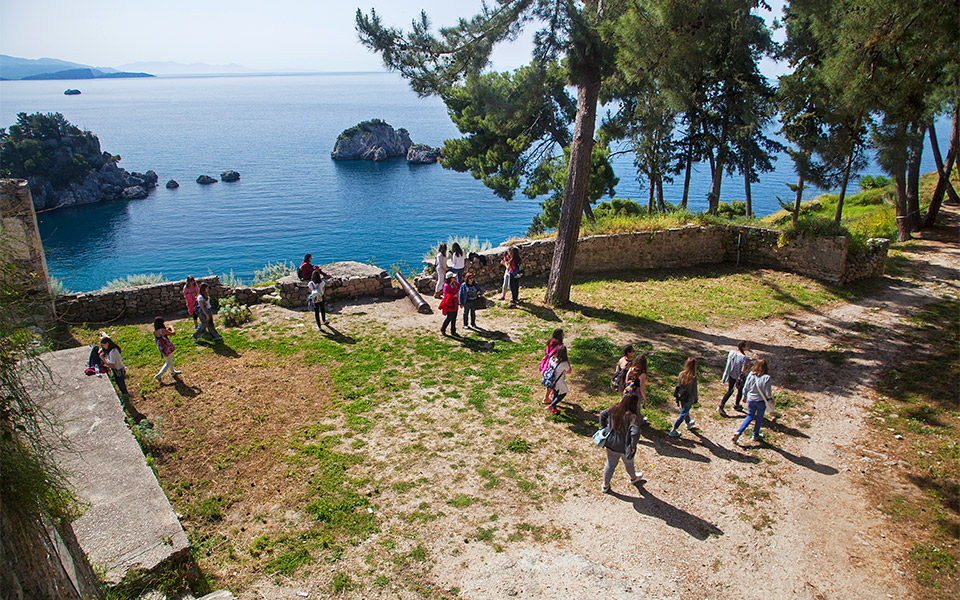
© Olga Charami
Anthousa and Aghia are another two enchanting villages with their own hidden surprises. In Anthousa you’ll find an impressively tall waterfall, as well as the restored Loukas watermill (one of ten that used to operate in the gorge) with its cafe. Between Anthousa and Aghia is the castle of Ali Pasha. Impeccably maintained with a view of the Ionian and the beach, it once was the stronghold of the Ottoman ruler during the period that he laid siege to Parga.
What is also worth tracking down is the tourist train that does a tour of the area. One route begins in Parga and ends at the Anthousa watermill, going by Valtos Beach. The other takes you to Ali Pasha’s castle.
For a final stop, go to Agia, a warm, lively village with a wonderful view of the Ionian islands, a folk museum, and a great little taverna, Oasi. Here proprietor Giannis Lekkas will tell you all about the local traditions and festivals, the Gouva trail that follows a ravine and passes under towering plane trees and old stone bridges, as well as all of the other reasons why you should really extend your stay.
Getting There
Parga is 430km from Athens and 343km from Thessaloniki. The cost for gas and tolls is roughly 140 euros and 75 euros respectively for a return trip.
Accommodation
Salvator Villas & Spa. A boutique hotel with rooms, suites and villas with king size beds and all the modern amenities. Minimal decor with rustic touches and balconies with a view. Additionally the hotel has an Italian restaurant and a spa with indoor and outdoor pools, a sauna, steam room and gym. From 145 euros.
Racconto Boutique Design Hotel. “Racconto” means fairytale and this particular one has been crafted by the architect Panos Petridis, and features a modern design aesthetic. The hotel, which is pitched at adults only, has a pool and indoor meditation room. From 150 euros.
Villa Rossa. The red building built in 1903 on the beach of Kryoneri was renovated this year and has a restaurant and various rooms with a modern aesthetic.
Food
When in Parga try:
Creative dishes at Castello Castello, (Tel. +30 26840.31239), exceptional flavors at Sapori at the Salvator hotel, (Tel. +30 26840.32910), and fish at Stefanos (Tel. +30 26840.31460). Also good is Aegis (Tel. +30 693.724.1479). Go to Oasi in Agia (Tel. +30 26840- 35272) for pies, local cheeses and meats and to Vasilis in Anthousa (Tel. +30 26840-31059) for home-style cooking and meat on the spit. Finally when at Sarakiniko beach try Christos’s Taverna (Tel. +30 26840-35207) in Agali.
Discover five mountain destinations where crisp...
A brave history and uniquely beautiful...
Whether you’re in northern, central or...
How Metsovo thrives against the odds...